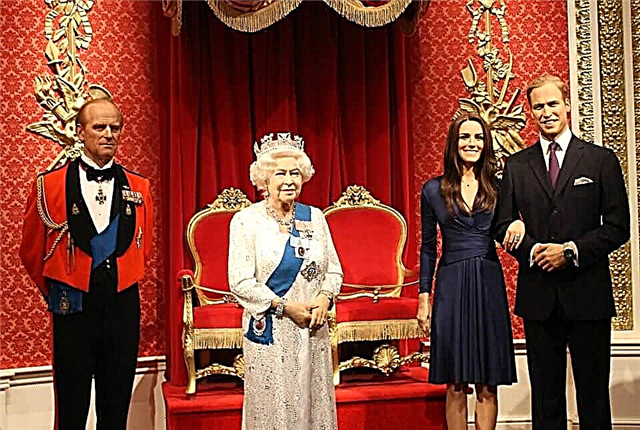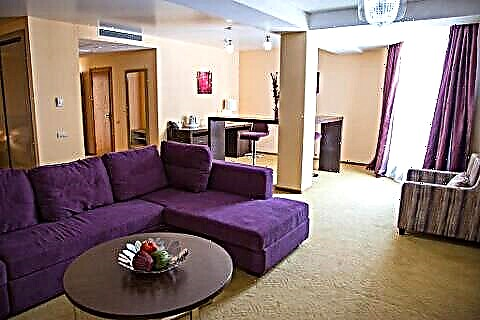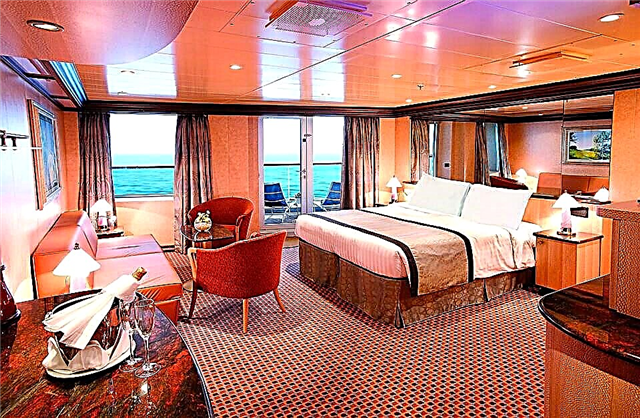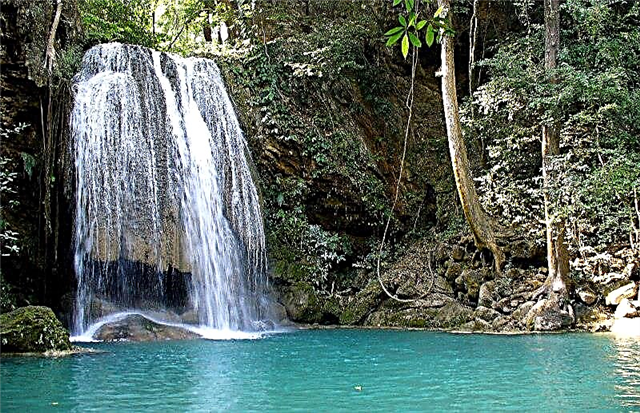Tourists always come to Rome with pleasure - there are many sunny days a year, warm sea, beautiful nature and numerous, perfectly preserved architectural monuments.
History

Basilica of Santa Maria Maggiore - Maggiore in translation means "majestic", it is really the largest of all the churches in the capital. This is the papal basilica. They differ from ordinary temples in that only once in a quarter of a century they open the “Holy Doors” and conduct a solemn divine service. The gate, which depicts Jesus and the Virgin Mary, will next open in 2025.
It is believed that only a truly believing parishioner, having passed through them, will be cleansed of all sins. There are several legends about the appearance of the basilica. Bishop Liberius was the initiator of its construction. When they began to decide where the temple should be built, the bishop had a dream - the Blessed Virgin is leading him to a hill with snow on it.
In Italy, snow is not a very frequent event in winter, but in that distant 352, at the beginning of August, the Esquiline hill was really covered with a snow-white cap. This was the sign and the construction of the church began. Since that time, in memory of this day, parishioners at the entrance are showered with red rose petals. Roses have recently been replaced by dahlias, but the tradition does not become less beautiful from this. At first it was called “Church of Our Lady in the Snow”, then after the name of the Bishop of Liberia, who initiated the construction. After some time, fragments of the manger of Christ were brought to the temple, and from that time it began to be called “Manta Maria Presepe”, that is, “Madona with a manger”.
The church received its final name in 431, after the famous Cathedral of Ephesus - “Santa Maria Maggiore”. Pope Sixtus II remodeled the temple in 440. After him, all the pontiffs considered it their duty to bring at least minor changes. In 1377, on the instructions of Gregory XIY, a 75-meter high bell tower was built. Every evening at 21 o'clock the bell rings. In the first half of the 18th century, in order to preserve the early frescoes, the facade with a portico and a loggia were added.
Interior
The most expensive, sacred for believers objects of the basilica, which should be paid attention to: several fragments of a manger, the cradle of the baby Christ, the icon "Salvation of the Roman people" and the relics of Levi Matthew. The basilica is the burial place of the architect Giovanni Bernini, popes Pius Y, Clement YIII, Clement Y, Paul Y, Sixtus Y and Pauline Bonaparte.
We can say about the interior - magnificent, grandiose, solemn! The interior of the basilica, in contrast to its outer part, has changed little since the day of its construction. During the construction of the building, different styles were used, not going into dissonance with each other. In the back of the room there is an arch with original mosaics depicting scenes from the life of Christ and the apostles Peter and Paul, preserved from the 10th century.

The frescoes retained the brightness and purity of their colors. Further, you can see the Papal Altar - it is here that the Pope conducts the service on the Day of the Assumption on August 15. Under the altar is the Bethlehem crypt, which contains a casket with fragments of Jesus' manger. Throughout the year, the pilgrim can look at the relic from afar, and access opens on Christmas Eve and Christmas Day.
So that visitors can see the relic and bow to it, one wall is made of crystal. The nave mosaics were made during the reign of Pope Sixtus III and are believed to have been made by local craftsmen. In the central nave, paintings depict scenes from the Old Testament. The vault of the nave is supported by 36 columns, four columns hold a huge canopy, where there is a sarcophagus with the relics of Matthew - the sacred relics of Catholics.
The wall of the loggia is decorated with a mosaic of the 13th century, which depicts the dream of Pope Liberia - the appearance of the Virgin Mary. The loggia is called the "Lodge of Blessings", from this place the Pope blesses the believers on holidays. The ceiling is decorated with rectangular recesses trimmed with gold, which are called caissons, giving the impression of a golden honeycomb.
Ancient mosaics have not survived everywhere, some have suffered, they were replaced in the XIII century. The floor of the basilica is magnificent, laid out with a complex geometric pattern. For it, they used multi-colored marble of valuable varieties. The technique is called "kosmateko". It is named after the creators of the technology - Kosmati. Some art historians believe that it was the representatives of this family who folded the floor pattern.
Chapels
Sistine Chapel (Cappella Sistina). There are several chapels in the temple. Sistine is located to the right of the entrance. It was built by Domenico Fontana on behalf of Pope Sixtus Y in 1543-1607. In the plan, the room is a Latin cross. The dome of the building, consisting of 8 sectors with picturesque images of saints, is amazing. A tabernacle rises on the thrones of the Holy Gifts, it is held by gilded bronze angels (work of Ricci, late 11th century).

Paolina Chapel (Borghese) and Sforza Chapel. The Paolina Chapel is, as it were, a mirror image of the Sistine Chapel, located in the opposite direction. Borghese is a noble, rose to the top thanks to Cardinal Camillo Borghese. In 1605 he was elected Pope under the name Paul Y. On his instructions, the Paolina Chapel, or the Borghese Chapel, was built. The chapel was designed by Flaminio Ponzio, he was provided with significant funds of a wealthy family, so the premises amazes with splendor and wealth. The decor is made of marble, bronze, richly decorated with gilding. The main relic is the Byzantine icon of the Mother of God “Salus Populi Romano” (“Salvation of the Roman people”).
The artist of the priceless icon is not exactly known; historians attribute it to Luke the Evangelist. Studies have shown that it is at least 2,000 years old. The chapel contains the burials of Clement YIII and Paul Y, whose tombstone was sculpted by Flaminio Ponzion in 1611. Another masterpiece of the basilica is the chapel, which some believe was designed by Michelangelo shortly before his death in 1564. In terms of decoration, it is much more modest than the Sistine or Borghese chapels.
Area

In Piazza Santa Maria Maggiori, on both sides of the church, there are palaces from the XYII and XYIII centuries. Opposite the basilica is a statue of the Virgin Mary and Child. It is cast in bronze and installed on a column 15 meters high. It was erected as a token of gratitude to the Blessed Virgin for saving the inhabitants of the city from the plague; it was transferred from the Roman Forum. The rear façade of the temple overlooks Piazza Exvilino. There is an obelisk that served as a lighthouse for pilgrims. Its height together with the cross is 25.53 m.
Where is it and how to get there
The Basilica is located in Piazza Santa Maria Maggiore, Rome, Italy.
You can get there:
- by metro to Termini stop, it is a 10-minute walk along Via Cavour.
- by bus 16, 70, 75, 360 717 to the Santa Maria Maggiore stop
- The Basilica is open from 7:00 am to 7:00 pm, admission is free
All kinds of museums, galleries with masterpieces of fine art, architectural monuments, historical museums, the majestic Vatican - all this leaves an unforgettable impression. Having visited this magnificent country once, I want to come back here again and again.











